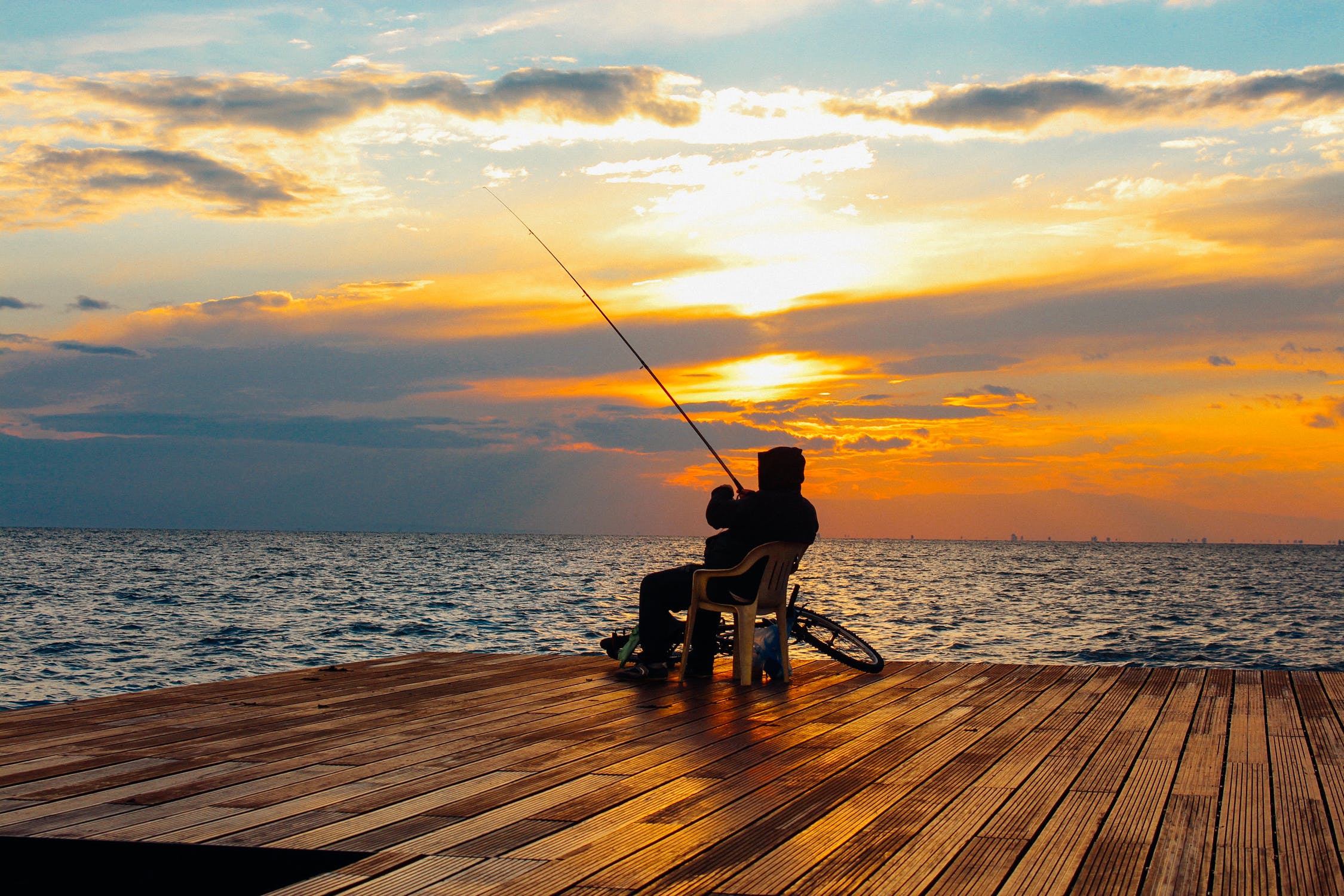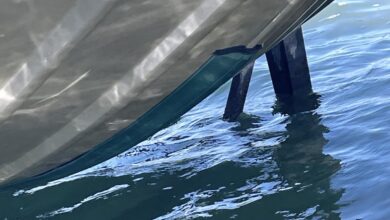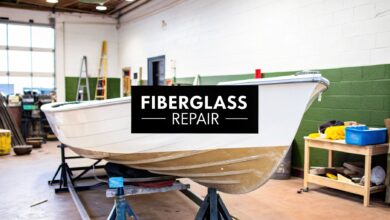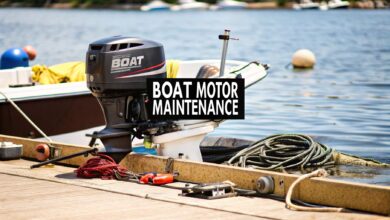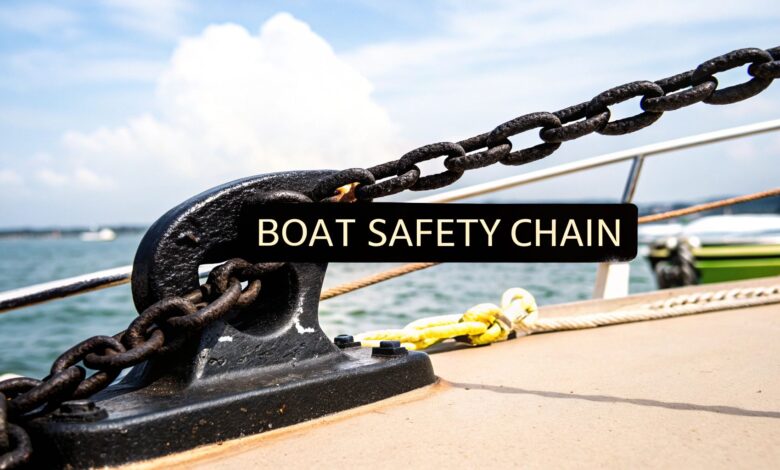
When you're out on the water, your anchor is your lifeline. A boat safety chain is the ultimate insurance policy for that lifeline. It creates a secondary, fail-safe connection between your anchor and your boat.
Its whole job is to step in and save the day if your primary shackle or swivel ever gives up.
Why a Safety Chain is Not Negotiable
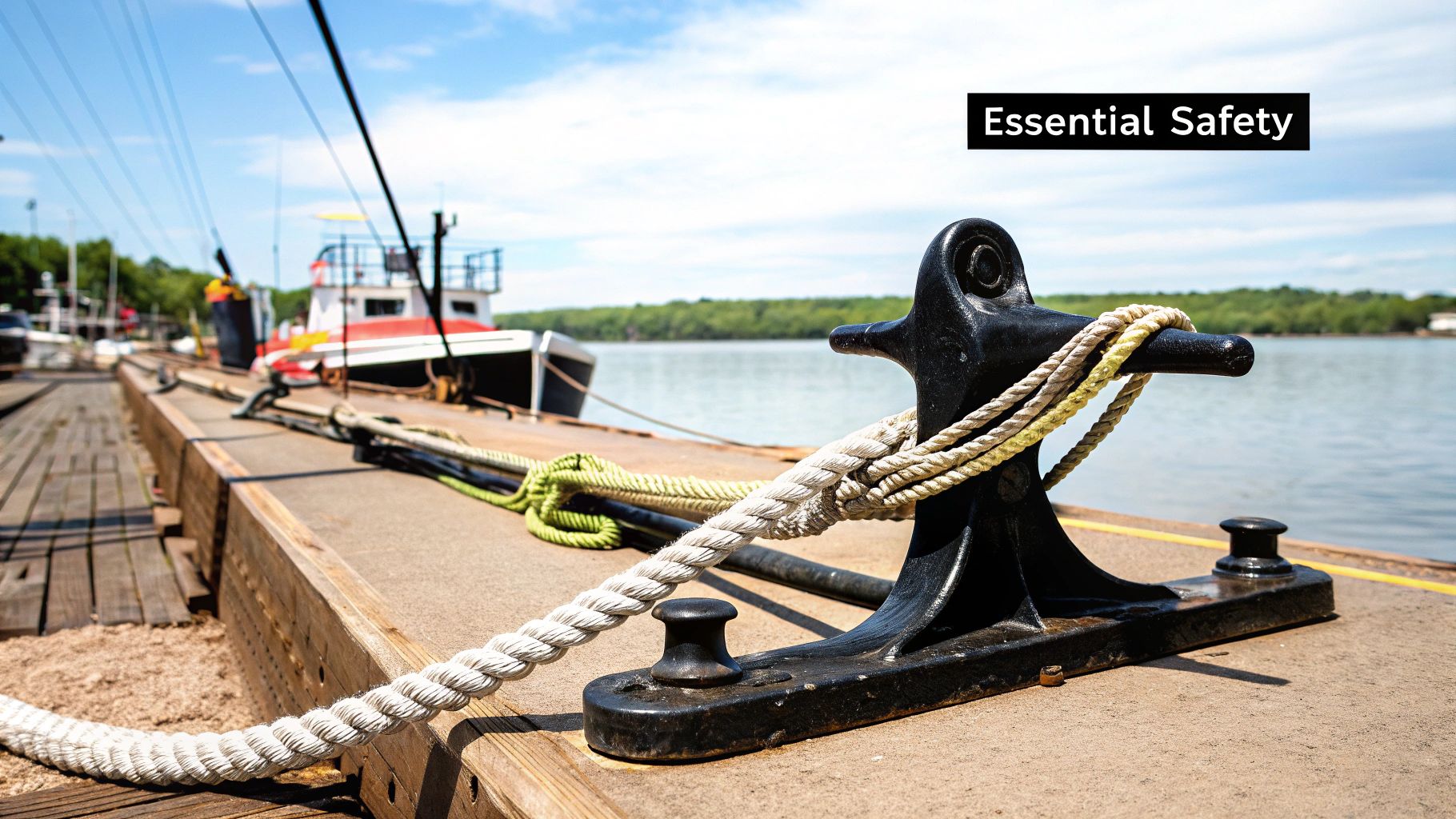
Think about any critical piece of gear you rely on—it almost always has a backup. Your anchor system should be no different. A single point of failure, like a loose shackle pin, is all it takes to lose your entire ground tackle.
The boat safety chain is designed to take over in that exact moment. This simple addition transforms your setup from a single-point system into a redundant one. It's a core principle of good seamanship.
Losing an anchor isn't just an inconvenience. It can quickly spiral into a dangerous emergency, especially if the weather turns or you're in a crowded anchorage.
A boat safety chain acts as a secondary connection, ensuring that even if your main shackle breaks under stress, your anchor—your most critical piece of safety gear—remains tied to the boat.
This vital piece of hardware delivers a few crucial benefits:
- Prevents Anchor Loss: It saves you the major expense and headache of replacing a lost anchor and rode.
- Enhances On-Water Safety: A safety chain stops your boat from becoming dangerously untethered and drifting.
- Offers True Redundancy: It directly addresses the weakest link in an anchor system: the single shackle.
Investing in a proper safety chain is a tiny price to pay to secure your vessel. It helps ensure you make it back to the dock safely after every trip.
Choosing the Right Safety Chain for Your Boat
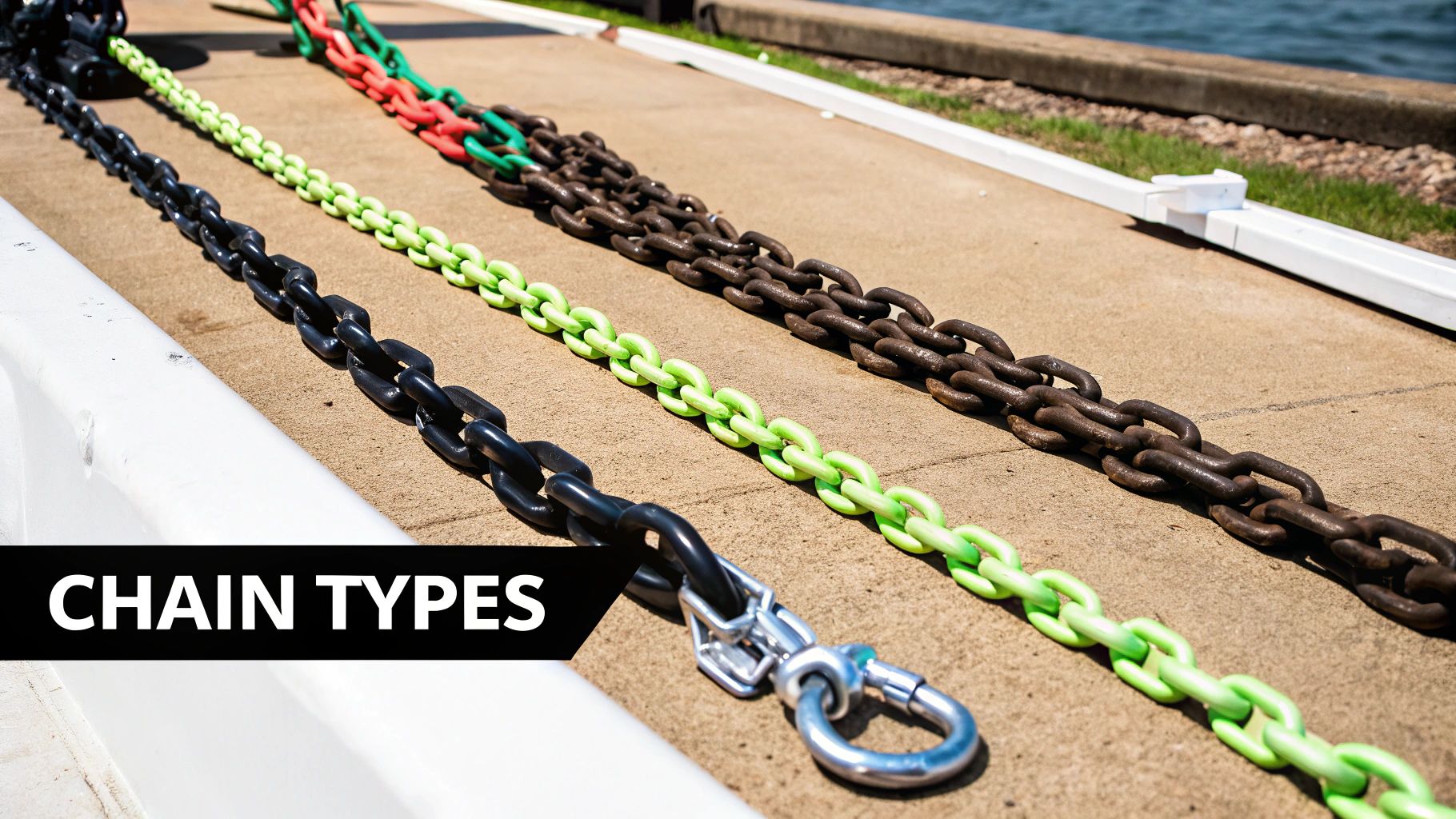
Picking the right safety chain isn't a task you can just eyeball. The chain you choose is a critical piece of your anchoring security. To get it right, you need to weigh the material, its strength grade, and the link size.
Each element has to match your boat's weight and the conditions you anchor in. It's a foundational part of being a responsible boater. This is reflected in the marine safety market.
Valued at roughly $759 million in 2025, the industry is growing as more people understand how crucial reliable gear is. You can explore more about this market growth in a report from Data Insights Market research.
Chain Material: Galvanized vs. Stainless Steel
The first choice you'll make is the material. It almost always comes down to two contenders: galvanized steel or stainless steel. Each has its pros and cons.
Galvanized steel is a go-to for many boaters because it's strong and affordable. Through hot-dip galvanizing, the steel is coated in a protective layer of zinc. This does a solid job of fending off rust.
On the other hand, stainless steel offers far superior protection against corrosion. This makes it the champion for anyone who spends their time in saltwater. It costs more, but its durability can make it a smarter investment.
Boat Safety Chain Material Comparison
| Feature | Galvanized Steel | Stainless Steel |
|---|---|---|
| Corrosion Resistance | Good, but the zinc coating can wear away over time, especially with abrasion. | Excellent, offering long-term protection against rust, particularly in saltwater. |
| Strength | Very strong and reliable for most boating applications. | Equally strong, but always match the grade to ensure proper working load. |
| Cost | More affordable, making it a budget-friendly option for many boaters. | Significantly more expensive upfront, but may offer better long-term value. |
| Maintenance | Requires regular inspection for signs of rust where the galvanizing has worn off. | Lower maintenance, as it is inherently resistant to corrosion and staining. |
Ultimately, both are great options. One will likely be a better fit for your specific circumstances.
Understanding Chain Grades and Sizing
Next up is the chain's grade. Think of the grade as a measure of its strength, specifically its working load limit (WLL). This number tells you how much force the chain can handle without failing.
For most marine applications, you'll see a few common grades:
- Grade 30 (G30): This is your standard-proof coil chain, a reliable workhorse.
- Grade 43 (G43): A high-test chain, this one is about 50% stronger than G30 of the same size.
For a safety chain, the rule of thumb is simple. Choose a grade that meets or exceeds the strength of your primary anchor rode.
Finally, you need to match the chain's link size to your boat's weight and your anchor shackle. A properly sized and graded boat safety chain is what turns your anchoring setup into a truly redundant system.
How to Properly Install Your Anchor Safety Chain
You can pick the perfect chain, but if it's not installed correctly, it offers a false sense of security. A properly fitted boat safety chain creates true redundancy in your anchoring system. The process is straightforward.
Your goal is to create a secondary connection that only comes into play if your main one fails. First, attach one end of the chain directly to the anchor shank. Use a shackle that matches your chain's material and strength.
Then, secure the other end to a dedicated, rock-solid strong point on your bow. Never attach it to the same cleat as your main anchor rode. Doing so defeats the purpose of having a backup.
The whole idea is to keep the safety chain totally separate from your primary anchoring system. It needs its own hardware, like a sturdy, through-bolted U-bolt. That way, if one system fails, the other is completely independent and ready to take over.
This simple setup is the key to a secure system.
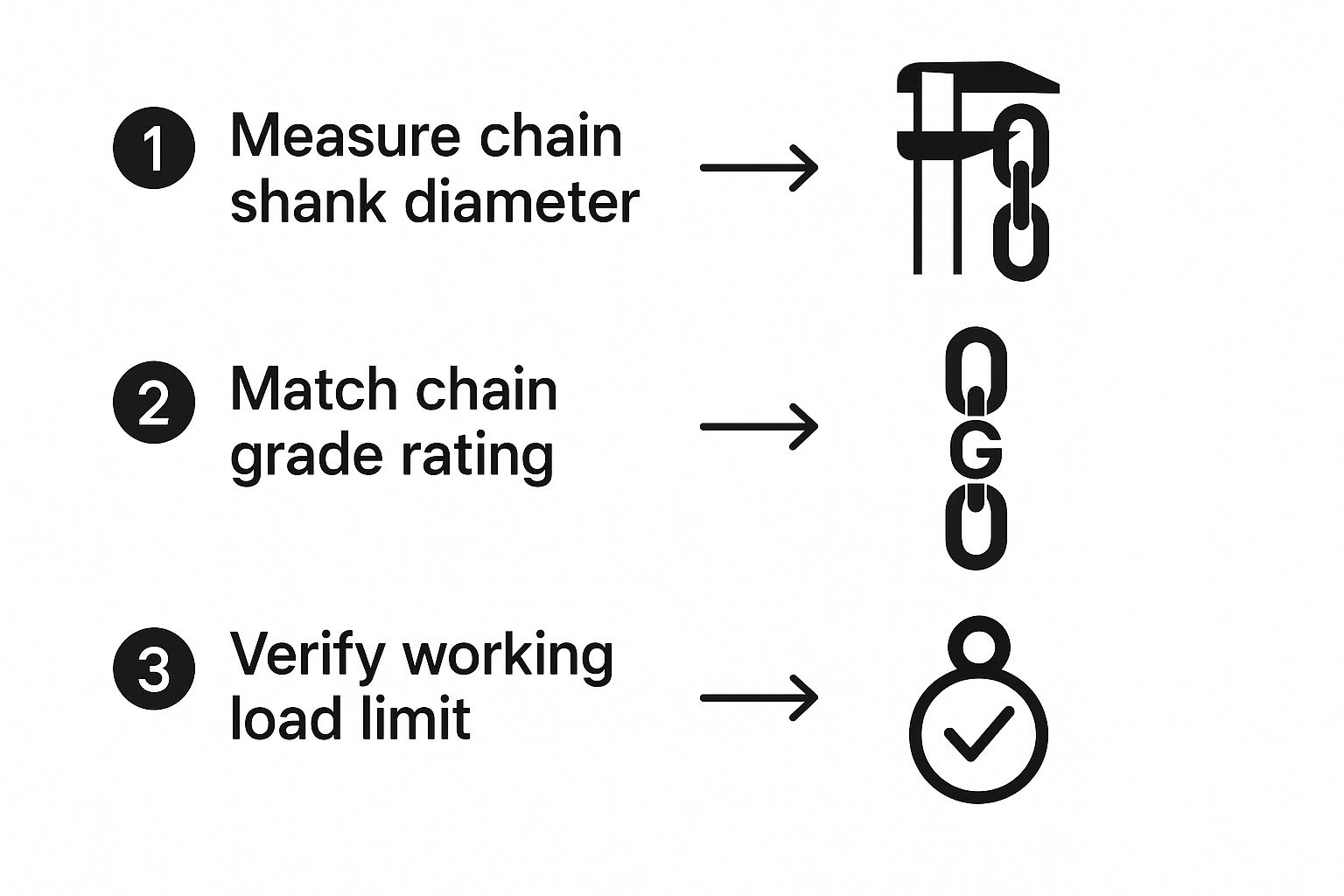
Getting the right size, grade, and load limits for all your gear is the foundation of a safe installation.
Finalizing the Installation
Once connected, check that there's a little bit of slack in the safety chain when your main anchor line is taut. The safety chain should not take any load during normal anchoring. Its job is to be there for an emergency.
This attention to detail is part of a bigger focus on marine safety. The market is expected to jump from $30.2 billion in 2024 to $47.8 billion by 2029. With the chain installed correctly, you’ve added a reliable fail-safe to your boat.
If you're looking for more tips on best practices, see our complete guide on how to anchor your boat.
Essential Inspection and Maintenance Tips
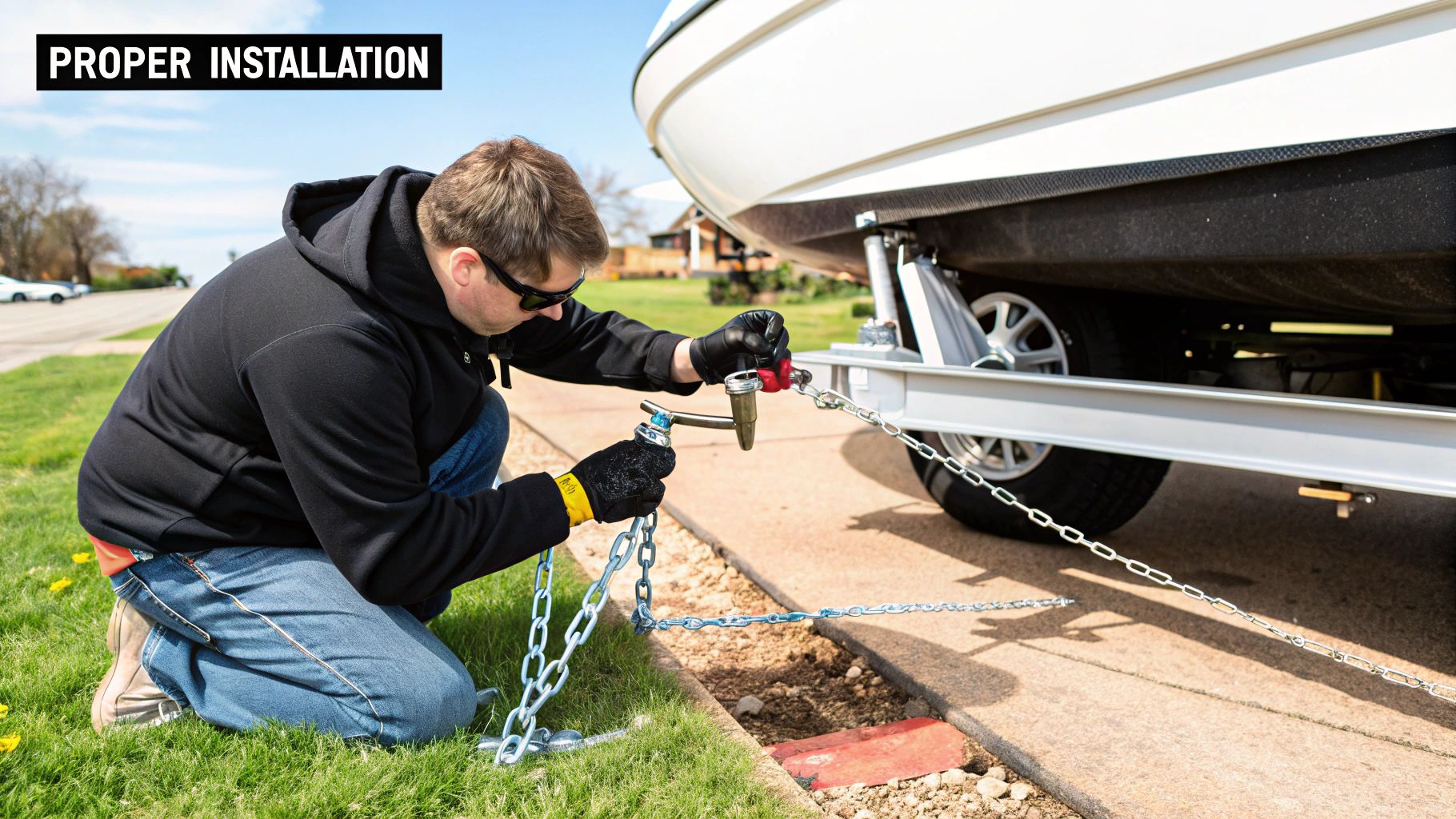
A boat safety chain is only as good as its condition. Regular, thorough inspections are not just a suggestion. They prevent catastrophic failure when you need that backup system the most.
This routine doesn't have to be a major chore. You’re just looking for the tell-tale signs of trouble that could compromise the chain's strength. A few minutes of inspection can spare you from a world of trouble.
Your Quick Inspection Checklist
Your primary enemies here are wear and corrosion. These two culprits are responsible for most chain failures. You'll want to look for links that look noticeably thinner than their neighbors.
Pay close attention to the shackles and other attachment points, too. These are common weak spots.
Here’s a simple checklist to run through:
- Rust and Corrosion: On a galvanized chain, look for spots where the zinc coating has worn off. For stainless steel, be on the lookout for any pitting or brown staining.
- Stretching or Deformation: Look at each link. A single deformed link is a compromised link.
- Secure Shackles: Give the shackles a good wiggle. The pins should be completely tight and ideally seized with mousing wire.
A safety chain showing significant rust or any sign of stretching has already lost its original strength rating. It needs to be replaced immediately. Trusting a weakened chain is a risk you never want to take.
To ensure your safety chain is always ready, roll these checks into a regular preventive maintenance schedule. Rinsing the chain with fresh water after each trip can also dramatically extend its life.
Common Safety Chain Mistakes and How to Avoid Them
https://www.youtube.com/embed/zyietLL9yNk
Even seasoned boaters can make mistakes with their boat safety chain. Getting this wrong can undermine your entire anchoring system. Let’s walk through the most common errors.
The most frequent mistake is using a chain that's too small or weak for the boat. If your chain isn't rated for your vessel's displacement, it’s practically useless in an emergency.
Another critical mistake is creating a single point of failure. I’ve seen people attach their safety chain to the same cleat as their main anchor rode. This defeats the purpose of a backup.
You need to secure it to a separate, strong point on your boat. Using the wrong shackle or forgetting to properly seize the pin is another classic blunder.
Getting the Setup Just Right
One of the most dangerous misconceptions is thinking a safety chain can stand in for a proper anchor rode. It can’t. Its only job is to be a last-resort backup if your primary line fails.
Another subtle but serious mistake is setting the chain too tight. A taut chain is already under load, which causes constant wear and fatigue. This compromises its capacity to absorb a sudden shock.
The goal is to create a strong, independent backup, not an extension of your primary system. A slack chain is a ready chain, while a taut one is already working, reducing its emergency capacity.
According to the U.S. Coast Guard, anchoring mishaps are a factor in roughly 10% to 15% of boating accidents each year. Understanding these errors is key to safer anchoring. Learn more in our article on the top causes of boating accidents and how to avoid them.
Recent maritime safety system market reports also highlight the importance of reliable equipment.
Boat Safety Chain FAQ
Even after you've got the basics down, a few questions about boat safety chains always seem to surface. It's one thing to have the gear. It's another to know you've set it up correctly.
Let's clear up some of the most common questions. Getting these details right can be the difference between a system that saves your boat and one that's just for show.
How Long Should My Safety Chain Be?
Your safety chain should be just long enough to have a visible droop when your main anchor rode is tight. For most setups, a length of one to three feet is all you need.
Think of it as a safety net, not an extension cord. That slack is crucial for it to absorb the sudden shock if your primary connection ever lets go.
Can I Just Grab Any Shackle for My Safety Chain?
Definitely not. The shackle must be marine-grade. Its working load limit (WLL) must be equal to or greater than the chain's strength rating.
It’s also vital to use the same metal for both the chain and the shackle. Mixing them creates a recipe for galvanic corrosion, which will silently weaken the connection.
The most important final step is to "mouse" the shackle pin with stainless steel seizing wire. This simple trick involves wrapping the wire through the pin's eye and around the shackle's body. It physically stops the pin from vibrating loose.
Do I Still Need a Safety Chain if I Have an All-Chain Rode?
Yes, absolutely. Even with a heavy-duty all-chain setup, your weakest link is almost always the single shackle. It connects the anchor to that chain.
A separate, independently attached safety chain provides vital redundancy right where you need it most. It’s a small addition that protects you from the most common failure point in any anchoring system.
For more tips, our safe boating checklist covers all the gear you need to double-check.
